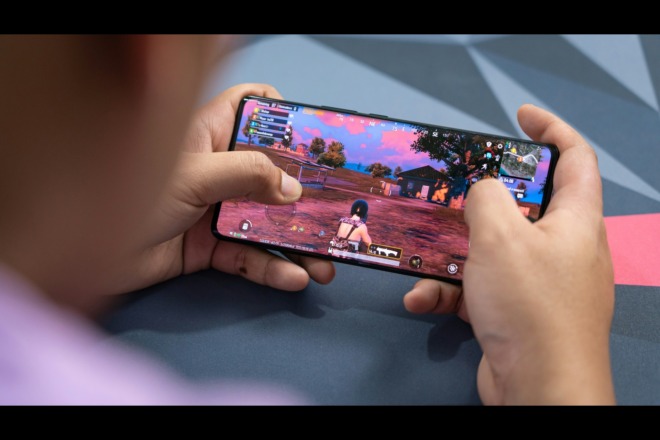When talking about different types of fonts, there are those fonts that were created for print materials, and then there are those that were developed specifically for on-screen use. As more and more items have gone digital, some of these created-for-the-screen fonts have gained traction.
Verdana is a font that was designed for use on-screen, and it has grown in popularity over the years. Some believe the region around the Microsoft headquarters inspired the name Verdana because it is lush and green. The word “verdant” means “something green,” and Verdana is a play on that word.
It is also said that one of the people on the Microsoft team who commissioned the font had a daughter named “Ana” and that brought out the “ana” portion of Verdana. The true origin of the name may never be known, lost forever in the brainstorming of creative geniuses who have since gone on to other work or retired from typography.
Origin
The Verdana family burst onto the scene on July 8, 1996. It was created by Matthew Carter and is a humanist sans-serif typeface. Microsoft Corporation commissioned the font. Some additional hand-hinting was added by Monotype’s Thomas Rickner.
It largely came into existence because more people were going online. The growth of the Internet saw the need for on-screen fonts that looked good, such as Arial and Verdana. Many kinds looked good in print but weren’t as legible or appealing in a digital form.
Since then, all releases of Windows have included Verdana. The whole purpose of it is to have legibility even at smaller sizes on low-resolution computer screens. There were no 4k displays back then, so people needed something they could read even in the worst conditions.
Even though screens have more advanced resolution these days, it is not a perfect technology. Still, Verdana is popularly used in design work to this day. The features that made it a great font in 1966 are the reasons it’s still a strong contender in the modern age.
The True Brains Behind Verdana
Virginia Howlett’s contributions to the Verdana font aren’t as readily known as that of Carter’s. She was Microsoft’s program manager for typography during the time Verdana came out. She’s probably better known for creating Windows’ interface with the release of Windows 95 OS.
She is the one who hired Matthew Carter, reviewing and working alongside him and Tom Rickner to come up with fonts such as Trebuchet and Georgia. Her work to find the best typographers of the time and guide them to perfection gave the world Verdana, a versatile font still used nearly three decades later.
The Mechanics of Verdana
The pixel patterns of Verdana have been carefully hand-crafted. This ensures that readers can tell the difference between letters that are often confused at smaller sizes. Think of the i, j, l, and the number 1. Each has a small, unique line to make it stand apart from the others.
The font is also a tad heavier to make sure the weight is readable even as small as eight pixels. Some of the features of Verdana include large x-heights, wider typeface, wider spacing, and bigger counters — spaces inside partially closed letters (c, s).
All of these elements work together to make this font readable even at extremely small sizes. Some additional distinctive features of the typeface include a square dot over the lowercase “i”. The lowercase “j” is one of the few letters within the typeface that does have a serif on top. Interestingly, the lowercase “a” is a double-story letter.
The capital letter “Q” has a tail smack on the bottom center of the circle portion of the letter. The upper case “E” has straight vertical and horizontal lines. To match the lowercase serif on the letter “j,” the uppercase “J” has a serif that swoops to the left, too.
Why the serif for the letter “J” and a square dot for the letter “i?” It keeps the viewer from confusing letters that look similar between upper and lower case and the number one. The designer ensured each one was distinct so readers could tell the difference and not stumble in their reading.
The extra space Carter implemented between characters keeps them from touching. The attention to spacing creates a readable text even at small sizes. By the same token, using Verdana for short words or headlines sometimes presents spacing challenges that require a bit of kerning adjustment.
What Does the Font Imply?
Verdana isn’t a particularly exciting font, but it is a very functional one. The wider typeface can create issues with some projects, so having another option in mind might be wise. For example, if a page is designed with Verdana and the person viewing it does not have the font on their computer, it can come off looking very odd because of the wider typeset of the letters of this typeface.
Although it is a sans serif, some of the elements to set apart the letters give the font a more informal and vintage look than modern serifs. Verdana is well suited for invitations, websites, and papers than for flyers or posters. If you want a slightly vintage look without going all the way over to old-fashioned, Verdana is an excellent option.
Designers don’t particularly hate or love this font. However, it is one that you should keep in your repertoire because it is so legible on computer screens. Additionally, the negative space inside some letters, such as the lowercase “b” adds to the informal look.
The letters are very similar to the style students learn to print letters in primary grades, making the font easy to read and simplistic in nature. Even the italic version of the font is very simple and only slants ever so slightly to the right.
According to the Department of Education, around 130 million adults in the United States have low literacy skills. Making text look familiar to what they learned in school and understand best works well for news outlets and those serving information to a wide general public.
Where It’s Commonly Found/Used
Verdana is used on numerous websites, in emails, and online everywhere. It is one of those fonts that people either find useful or despise. Many businesses have used it for their logos or marketing over the years, with some situations creating a huge stir. It has caused public backlash more than once.
Some even go so far as to say that Verdana destroys the planet because it takes up more space than other fonts, using more paper. Of course, since people use it most frequently online, this argument may not hold water. Still, it does show the level of disgust some designers feel for the font.
These critics point out that screen widths are wider today than when the font was created, so the wider typeface is no longer necessary. Those who frequently use Verdana, however, point to its ability to easily translate into multiple languages as one of its positive aspects.
So arguments about it not looking good in print are moot. They do admit that the font looks better in smaller sizes than in larger sizes. It’s because of the wider footprint of the font and the fact the width increases as the size of the font increases.
Others feel the wider font doesn’t work well on small, digital screens such as an iPhone. However, unless it is extremely small, such as under 10 points, the font translates fine on smaller devices. Its unique shape makes it easy to read at most sizes.
As with many popular fonts, people either love or hate Verdana. Numerous articles and blog posts abound if you search for reviews. Only you can decide if it’s the right option for your project. It is highly readable at smaller sizes and designed for digital screens, but so are a lot of other modern fonts.
What Makes Verdana Unique?
Aside from Verdana having great legibility and an aesthetic look, it is unique because it is one of the most east-to-understand fonts available. People who have reading disorders like dyslexia often find it helpful. Even though its creators designed it about three decades ago, its accessibility level still beats many modern fonts.
People often use it to make their projects more accessible. Most of the lowercase letters are different from the uppercase, making them easier to read for people with reading disorders. For example, the capital “I” has two horizontal lines at the top and bottom to differentiate it.
Many similar-looking letters have different styles. For instance, “m” is round while “w” is pointy. It isn’t very noticeable, but it makes a huge difference. These small details make Verdana one of the top accessible fonts for people who need help reading. It even is compliant with the Americans with Disabilities Act.
This font’s accessibility doesn’t stop at reading disabilities. It is compatible with accessibility tools like screen readers and magnifiers, so it is good for people with visual or auditory impairments, as well. It offers much more support than many other font types.
If you want to make sure everyone who sees your work can read it properly, Verdana is a good font choice. Even though its creators made it mainly for online use, it looks good in print, too. Its high readability might get more people to pay attention to and engage with your work.
Where Should It Be Used?
You can use Verdana on mobile, in print, or on the web because it looks great with each. Even though it was supposed to be an on-screen-only font at first, many people use it for other projects. Its unique features make it translate well in most cases.
The font is mobile-safe, so it is an excellent choice for things such as mobile apps and advertisements. It works well because it is easy to read even when it’s incredibly small. Since it holds up with most resolutions, it will look good on almost all phones and tablets.
It is also a web-safe font, making it perfect for things such as websites and email marketing. Since its creators originally designed it for low-resolution screens, it will hold up even on poor-quality devices. This is probably the best use for it.
Most print styles handle Verdana well. It works particularly well with low-resolution devices including laser printers. However, for offset printing or printed documents, it may appear a bit fuzzy. In those cases, it is probably best to go with a different font. You can use Tahoma as an alternative. If you want your work to hold up in all formats, Verdana is a safe choice.
What Should It Be Used For?
Verdana can be used for almost any online purpose. It has high readability and looks simple, so it looks great on everything from posters to landing pages. If you want to use it alongside different fonts, many work well with it.
Other fonts that pair well with Verdana include Arial, Scala, Lucida Grande, PT Sans, and Ratio Modern. Because it has elements of both serif and sans serif, you can match it with either style of type and come out with a beautiful page design.
Microsoft’s own managers have indicated that the font doesn’t work well in eBooks, though, and indicate that they’ve chosen other fonts for Microsoft eBook releases. If you are formatting a book or manual, you may want to shy away from Verdana. Primarily due to its width. This can throw off the formatting and create long, strange-looking lines.
Love it or hate it, Verdana is in such wide use on so many different computer systems. It is certain to stick around for many years to come. Because it is such an easily read font, even at the smaller sizes, it is also likely it will continue to dominate the Internet for the foreseeable future. Those who argue against this font may be fighting a losing battle. Those who love Verdana are just as passionate as those who hate it.
Why Use Verdana Over Other Fonts?
You should use Verdana over other fonts if you want your work to look equally good offline and online. Its mechanics make it easy to read in almost any format. The lack of serifs means the font is easy to read in various sizes.
The font looks as good blown up to 60 points as it does shrunk down to eight points. It’s a great choice if you want to simultaneously put your work on mobile devices, in print, and on the web. However, it does have a wider line than other versions, so the space available for viewing can present some challenges for designers.
Some people point to similarities with fonts such as Frutiger. Carter mentioned in various interviews and articles that he honed in on spacing when creating Verdana to ensure it would work well on digital screens.
This font began because people needed a standard on-screen font and has held up despite huge leaps in resolution quality. It remains a good choice for mobile, web, and print typography. There are few fonts that look good no matter if they are on a large monitor or a tiny smartphone.
The Font Series Guide: Introduction
Chapter 1: 15 Google Fonts You Should Be Using
Chapter 2: Times New Roman
Chapter 3: Roboto
Chapter 4: Georgia
Chapter 5: Verdana
Chapter 6: Helvetica
Chapter 7: Comic Sans
Chapter 8: Didot
Chapter 9: Arial
Chapter 10: Tahoma
Chapter 11: Garamond
Chapter 12: Century Gothic
Chapter 13: Brody
Chapter 14: Bromello
Chapter 15: Savoy
Chapter 16: Athene
Chapter 17: Calibri
Chapter 18: Proxima Nova
Chapter 19: Anders
Chapter 20: Monthoers
Chapter 21: Gotham
About The Author
Eleanor Hecks is the Editor-in-Chief of Designerly Magazine, an online publication dedicated to providing in-depth content from the design and marketing industries. When she's not designing or writing code, you can find her exploring the outdoors with her husband and dog in their RV, burning calories at a local Zumba class, or curled up with a good book with her cats Gem and Cali.
You can find more of Eleanor's work at www.eleanorhecks.com.


